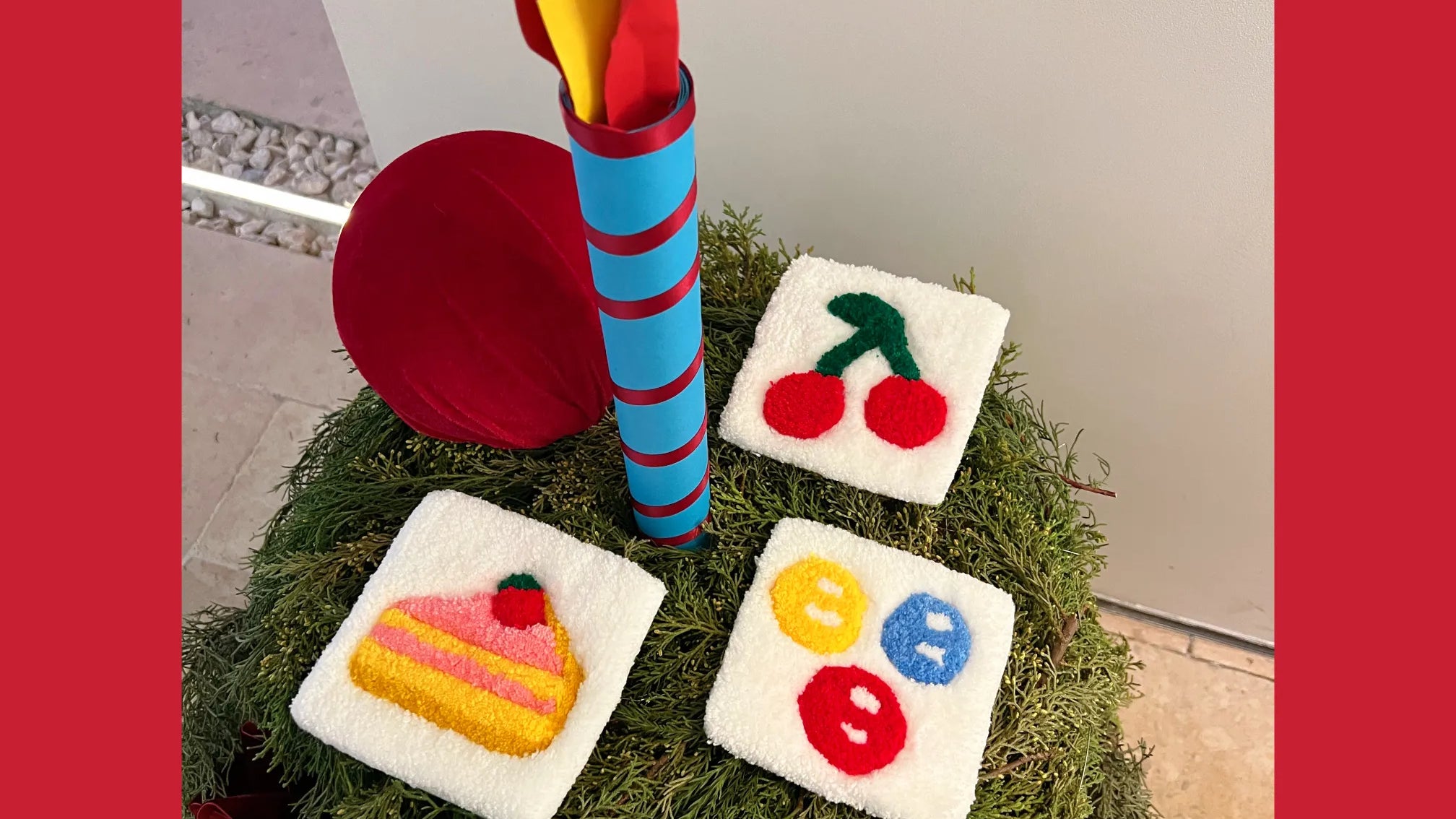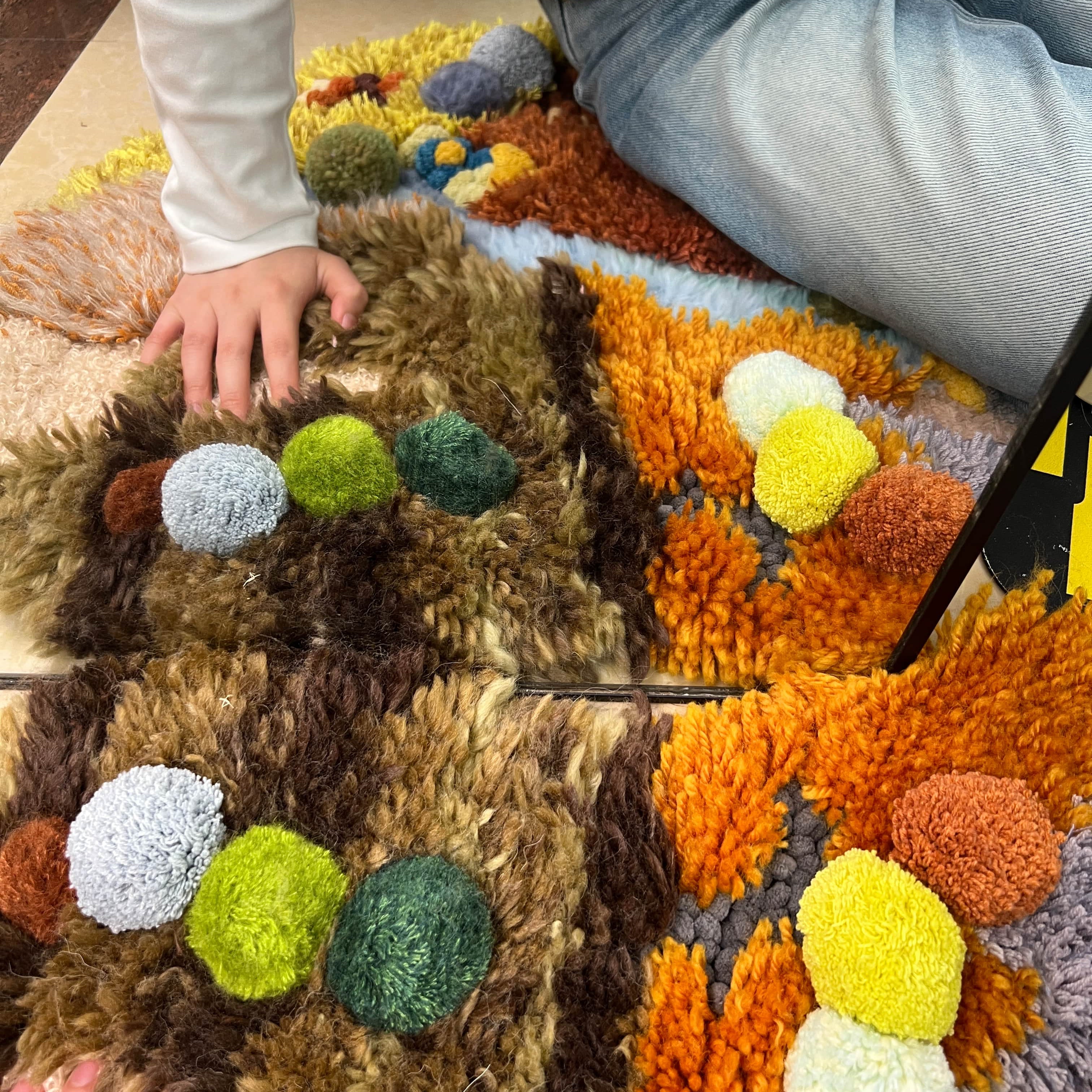Handmade woven pieces are more than decor. They are tactile memory makers that bring warmth and personality to a room. Whether you own a ChillFuzz wall hanging, a set of moss coasters, or a small handcrafted rug, proper care helps those objects stay beautiful and useful for years. This guide covers practical handmade decor care steps, woven item cleaning tips, and everyday yarn product maintenance so you can enjoy your pieces with confidence.

Know Your Yarn Material Before You Clean
Different fibers need different care. Before you reach for soap and water, check the product description or care tag to identify the yarn type. Common fibers used in ChillFuzz products include cotton, wool, acrylic, and blended yarns. Each material behaves differently when wet, when exposed to heat, and when stored.
Cotton
Cotton is sturdy and typically tolerates gentle washing. It offers crisp stitch definition and resists many stains. Hand wash cotton pieces in cool water with a mild detergent, or use a machine on a gentle cycle inside a mesh laundry bag for small items like coasters. Avoid high heat drying to prevent shrinking.
Wool and Wool Blends
Wool is cozy and resilient but also prone to felting and shrinking when agitated in hot water. For wool items, always use lukewarm or cool water, a wool safe detergent, and gentle soaking rather than rubbing. Press water out between towels and lay flat to dry in shape. For delicate or heirloom pieces, consider professional wool cleaning.
Acrylic and Synthetic Blends
Acrylic is generally forgiving and colorfast. Many acrylic and acrylic blend pieces can be gently machine washed on a delicate cycle. Still, hand washing is safest for mixed texture pieces to preserve loft and avoid excessive pilling. Avoid high heat in the dryer as it can melt or distort synthetic fibers.
Novelty Yarns and Textured Fibers
Bouclé, chenille, velvet, and moss style novelty yarns add amazing texture but often hide the stitch structure. These fibers require extra care. Handle them gently, avoid vigorous rubbing during cleaning, and always air dry flat. If your piece includes multiple fiber types, treat it as the most delicate fiber in the mix.
Gentle Hand Washing Step by Step
Hand washing is the safest cleaning method for most handmade woven pieces. Follow these steps to remove dirt while protecting the shape and texture of your item.
- Fill a clean basin with cool or lukewarm water and add a small amount of a gentle detergent or wool wash.
- Submerge the piece fully and let it soak for 8 to 12 minutes to loosen dirt and oils.
- Gently agitate by lifting and pressing the item in the water — avoid scrubbing or twisting.
- Drain and refill the basin with clean water to rinse until the water runs clear.
- Press out excess water by rolling the piece in a clean towel. Do not wring.
- Reshape the piece and dry flat on another towel away from direct sun or heat sources.
Spot Cleaning for Small Stains and Everyday Refresh
Spot cleaning prevents unnecessary full washes and is ideal for decorative pieces that are not exposed to heavy use. Use a soft white cloth dampened with cool water and a mild detergent. Blot the stain from the outside in to avoid spreading it. For stubborn spots test on a hidden area first.
If dealing with food or oily stains, sprinkle a little cornstarch or baking soda over the area to absorb excess oil, let it sit for an hour, then gently brush away and spot clean.
How to Handle Pilling and Surface Wear
Pilling is normal for many yarns especially under friction. Use these techniques to control and safely remove pills without damaging your piece.
- Reduce friction by placing coasters under drinks and limiting repeated rubbing against rough surfaces.
- Use a fabric shaver or sweater comb on a low setting to remove pills gently. Move along the grain and be careful on delicate or looped textures.
- For high pile novelty yarns trim pills carefully with small scissors if a shaver is too aggressive.
Blocking and Reshaping Your Woven Pieces
Blocking helps restore shape and even out tension in flat pieces. After washing and while the item is damp, pin the piece to a blocking board or a clean towel in the desired shape. Use rustproof T pins and allow the piece to dry fully before unpinning. For delicate fibers use a light steam from a distance rather than direct ironing.
Storage Best Practices to Prevent Damage
Proper storage keeps your handcrafted items fresh between uses. Follow these simple rules.
- Store in a cool dry place away from direct sunlight to prevent fading.
- Fold flat when possible and place in a breathable cotton bag or a drawer lined with acid free tissue.
- For long term storage add natural moth repellents such as lavender or cedar blocks rather than mothballs which can leave strong odors.
- Avoid storing in plastic bags for long periods as trapped moisture can cause mildew.
Protecting Mixed Material Pieces
Many ChillFuzz designs combine yarn with wooden beads, metal rings, or leather cords. These accents need gentle care. Wipe wood with a dry cloth and avoid saturating it with water. Polish metal parts with a soft cloth and keep leather away from excessive moisture. When washing an item with embedded accents remove or protect the non fabric elements if possible and spot clean around them.
When to Seek Professional Cleaning
If you own a valuable heirloom style piece or one with intricate mixed materials consider professional textile cleaning. Conservators and specialty cleaners know how to handle fragile fibers and can treat stains or structural concerns that are risky to address at home. Use trusted local professionals and ask about experience with wool and handwoven textiles.
Daily Use Etiquette to Extend Lifespan
Simple daily habits prevent wear and tear. Rotate coasters and rugs to distribute use evenly. Avoid placing hot pans or unprotected plant pots directly on yarn surfaces. Keep pets nails trimmed to reduce snagging, and for high traffic areas consider placing a thin protective mat under rugs during heavy use seasons.
Fixing Snags and Loose Threads
If you find a snag or pulled loop avoid pulling the yarn further. Use a blunt needle or crochet hook to gently pull the loose strand back through to the wrong side of the fabric and secure it by weaving the tail in. Trim only the excess tail after it is securely tucked in.
Resources and Further Reading
For more detailed fiber specific recommendations check resources such as the Craft Yarn Council for yarn labels and standards and the Textile Conservation community for guidance on special care. ChillFuzz also maintains a growing care library with product specific instructions which you can find on our Handmade Decor Care page.
ChillFuzz Product Care and Support
Every ChillFuzz product page includes care advice tailored to that item. If you are ever unsure about washing a specific kit or finished product contact our support team through the product page and include a photo and a brief description of the fiber and the problem. We will advise the safest approach to cleaning and restoration.

Summary and Confidence in Longevity
With a little attention handmade woven pieces can stay beautiful and functional for years. Identify the yarn type, favor gentle cleaning methods, prevent pilling, store thoughtfully, and treat mixed material accents with care. These practices not only preserve your ChillFuzz creations but also deepen the relationship you have with objects made by hand.
For step by step product care notes visit our product care hub at ChillFuzz Product Care and for inspiration on styling and gentle daily use see our styling guide at Soft Yet Strong Yarn Styling.
Enjoy your handmade pieces and thank you for choosing objects that are crafted with intention and care.




